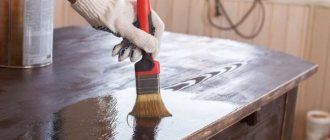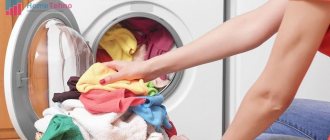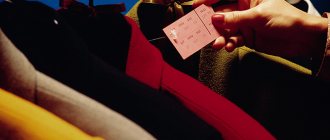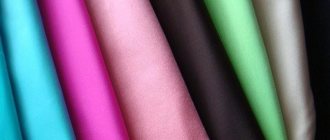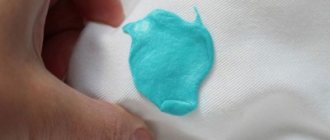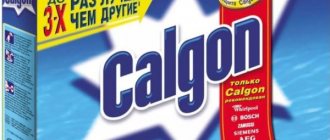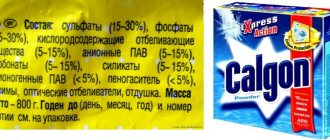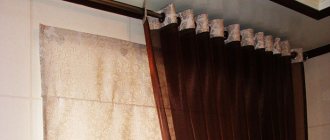Do you want to diversify your wardrobe, experiment with faded T-shirts, or restore favorite items that have lost their former appeal? Special fabric paints will help solve these problems. They allow you to show your imagination, create a unique image and your own style. These paints are easy to use at home, you just need to know the basic rules and nuances.
What types of fabrics can be dyed
The most flexible materials in this regard are those made from natural fibers: silk, linen, cotton and wool. Fabrics made from mixed fibers are less susceptible to dyeing. Polyester is the worst dyed material, since its fibers almost do not absorb pigment. As a result, the color of the fabric will turn out to be pale and will fade when washed.
Advice! If a jacket made of synthetic material has lost its appearance, it is better to take it to the dry cleaner for painting. Specialists use professional coloring agents, which have an effect only under strict adherence to temperature conditions and special conditions.
At home, you can change the color and shade of dresses, T-shirts, shirts, skirts and towels without much effort. Painted denim products are very popular.
All dyes are divided into the following types:
- aniline;
- acrylic;
- natural;
- plastisol;
- stamped.
The paint must be selected based on the expected result and the composition of the fabric fibers. Aniline and natural dyes are processed to obtain a uniform color. Acrylic or luminous paints are perfect for painting on fabric.
How to choose a fabric dye
In specialized stores you can find a huge number of paints for clothes, but you need to choose according to the type of material and the desired result. Not everyone is able to dye items made of silk or synthetics, so read the instructions for use first.
The choice of paint type will depend on the purpose of the procedure. For full coloring it is recommended to use aniline dyes, and for a print or a separate area - acrylic dyes. When choosing a dye, it is better to give preference to brands that have already proven themselves, otherwise you can ruin your clothes.
Aniline dyes
This type of permanent paint comes in liquid or powder form. Used for uniform dyeing of fabrics made from natural fibers.
Synthetics usually change color poorly, as well as mixed materials containing more than 60 percent artificial fibers.
The procedure for working with aniline dyes is as follows:
- The color is diluted with a large volume of water in a ratio of 1/30 or 1/40 to the weight of the material. For example, for a towel weighing 100 grams, you can use 3 or 4 liters of dye solution.
- The fabric is completely immersed in liquid and boiled at 95 degrees. If you boil longer, the color will become brighter.
- To fix the color at the last moment, add 2-5 tablespoons of table salt.
- When dyeing a wool product, you must additionally add two tablespoons of vinegar to the water. For cotton - baking soda.
- After finishing the painting process, the product should be rinsed in cool water. During the first three washes, the item will most likely fade, so it is better to wash it separately.
The method described is batik dyeing. You can achieve a different result by working with aniline dyes:
- Gradient . The material is gradually lowered into a container with a dye at regular intervals. Then the part of the fabric immersed in paint for a longer time will be a couple of tones darker than the part that was immersed much later.
- Divorces . The material is twisted by hand, as if squeezing, and tied tightly with a cord. In this form, the fabric is boiled in a dye solution.
- Knot pattern . Coins or buttons are wrapped in cloth, threaded, and the material is boiled in dye. The result is a characteristic ray-shaped pattern.
Material dyeing technology
You can paint things in different ways. Technologies for coloring the entire thing:
- manual - boil the item in a pigment solution;
- wash with pigment in the washing machine.
You don’t have to paint the entire material, but just apply a design to it. This technology is called batik.
In the washing machine
You can dye an item by washing it in a washing machine with dye. The method is simple and fast, but has a drawback - paint particles settle on the inner surface of the drum. Items may be damaged during subsequent washing.
After dyeing in the washing machine, you need to rinse it - run the washing cycle twice without clothes or with unnecessary fabric.
Algorithm for dyeing in a washing machine:
- dilute the paint and pour it into a container for powder;
- wet the item, put it in the drum;
- run the wash with water heated to 90 degrees for 30 minutes;
- turn off spin.
After washing, rinse the item with cold water.
To watch the video of coloring the product:
Acrylic dyes
They are better suited than others for painting cotton, wool and silk fabrics. They are convenient for creating both bitmaps and real masterpieces. Original colorful clothes will highlight your individuality.
The technique of painting with indelible acrylic paint is similar to working with gouache or watercolor. First you need to apply contours to the material with a pencil or a specially designed marker, then use a natural brush.
Acrylic dyes that have a water-dispersion base are used for painting fabrics. They lend themselves well to dilution with water, have no odor, and when completely dry, they become indelible. However, in order to avoid stains, such clothes should be gently washed by hand with water heated to no more than 40 degrees.
Acrylic paints are available for sale in cans, tubes and spray form.
The highest quality acrylic dyes are produced by manufacturers:
- Decola;
- Dylon;
- Simplicol;
- Marabu.
Popular paint manufacturers
Manufacturers of acrylic paints:
- "Decola";
- "Delon";
- "Simplicol";
- "Marabou";
- "Pebeo";
- "Javana";
- "Gamma";
- "Pigment Acrylic";
- "Surf";
- "Ideal".
Lumier has gold and silver dyes that give a metallic effect.
St. Petersburg Decola paints are the most popular among batik artists. Sold individually and in sets. Additionally there are brushes, solvents, contours. The average cost is 110 rubles per 50 ml jar.
- French manufacturer. Their textile dyes are easy to use and safe. An additional assortment is represented by brushes, solvents, and stencils. The average cost is 300 rubles per 45 ml jar.
German offers a wide range of products. They have a lot of pigments of different colors, brushes, applicators, stencils. Pigments are convenient for drawing small details. To fix the color, just iron the item with an iron. The average cost is 70 rubles per 20 ml jar.
The pigments are suitable for coloring natural and synthetic materials. They are easy to use, even when painting by hand. Gives a rich color. The average cost is 70 rubles per 20 ml jar.
Screen printing inks are water-based. Light colored material should be dyed. The average cost is 130 rubles per 50 ml jar.
Natural dyes
There are many plants in nature that can give fabric fibers a bright shade:
- vegetable juices;
- fruits and berries;
- onion peel;
- turmeric;
- Oak bark;
- tea;
- coffee;
- lemon and orange zest;
- nettle leaf;
- and many others.
Their main advantage is environmental safety. If you are susceptible to allergic reactions, then you should not use synthetic dyes. There are so many natural pigments around that can transform your items!
The dyeing technique is similar to working with aniline dyes for fabric, the difference is that the aqueous solution is not brought to a boil. It is enough to heat it to 60 degrees and hold the item in it.
The color fixing process is carried out using a 1% aqueous solution of the following substances:
- copper sulfate;
- ferroammonium or potassium alum;
- potassium bichromate;
- tin chloride.
It is necessary to soak the fabric in the prepared solution for about 25 minutes, then rinse it in a weak vinegar solution. In clubs you can often meet people with luminous patterns on their sneakers and suits. Extraordinary images are created with special fluorescent paints based on plastisol.
The following varieties are available for sale:
- glow in the dark and also when exposed to ultraviolet radiation;
- glow only in ultraviolet light.
There are also invisible and visible paints. The former look white in daylight, but in the dark they begin to emit yellow, blue, green and other colors.
How to wash dyed items?
Since applying paint to material at home differs significantly from factory production, caring for painted items should be as gentle as possible. To maintain the brightness and saturation of colors on fabric:
- wash clothes only by hand, in water with a temperature of less than 30 degrees and separately from other things;
- try not to soak the product;
- choose soft detergents or powder for colored clothes;
- Minimize friction with your hands when washing;
- rinse things thoroughly;
- at the last stage of rinsing, add a little vinegar to the water to fix the color;
- do not wring or twist the product;
- dry things away from heating devices and ultraviolet rays;
- Iron at low temperatures on reverse side.
Try to wear such clothes carefully, since the use of aggressive stain removers on dyed fabric is unacceptable.
Stamp type inks
Used in laundries and hotels to place markers on bed linen, towels and other fabric supplies. They are diverse in chemical composition:
- alcohol-based - characterized by rapid drying and resistance to boiling and even bleaching;
- oil-based - quite durable, but the drying process is slow;
- water-glycerin - absorbed instantly, do not smear, can withstand heating up to 70 degrees, often black;
- colorless - invisible under normal lighting, visible under UV radiation, used for hidden marking.
The process of dyeing fabrics is very exciting and will give your favorite items a unique look.
How to dye fabric at home
All fabric dyes are divided into two types. There are these:
- Heat-set, which are fixed to the fabric using an iron. These include acrylic or polymer dyes. Their peculiarity is that they envelop, and are not impregnated into the fibers. Acrylic fabric paint is indelible, although it can be diluted with water.
- Steam cured (aniline). Dyes of this group penetrate through the fabric. Suitable for denim items. When selecting shades, you need to take into account that immediately after application to the fabric the color becomes dull. The brightness is restored by steam treatment. You can also pour diluted paint into the drum of a washing machine.
Acrylic paints
The most common dye for wool, cotton, polyester, and synthetics is acrylic. The painting technique is reminiscent of painting with gouache or watercolor. The paint used is water-dispersion based, odorless, and easily diluted with water. It is produced in tubes, jars, cans (aerosol), in the form of sprays (applied in drops). It comes in glossy, matte, pearlescent, and fluorescent. Popular acrylics include:
| Name | Price (rubles) | Characteristics | pros | Minuses |
| "Batik acrylic" 50 ml | 75 |
|
| not suitable for silk; shelf life is short. |
| "Gamma", fluorescent, 70 ml | 548 |
|
| You need to apply the pigment carefully, because if you don’t have the skills, the paint will spread over the fabric. |
| "Decola" 50 ml | 101 |
|
| After the shelf life expires, the properties of paints deteriorate greatly. |
| "Javana Batik" 75 grams | 405 |
|
| The area with paint may lose its elasticity. |
In addition to the listed advantages of acrylic dyes, there are several more positive properties that are suitable for all brands. Dyes differ:
- quick drying;
- the ability to mix shades;
- low cost;
- economical in consumption;
- brightness, color fastness;
- no need to additionally secure the drawing;
- hypoallergenic;
- pleasant smell.
- How to cook turkey in the oven
- Inhalation for a runny nose - can it be done at home? Recipes for inhalation solutions for a runny nose
- Fried squid with onions - recipes with photos
Aniline dyes
This type of permanent paint is available in liquid or powder form. It is best to use textiles for single-color dyeing, because synthetic or mixed fabrics do not process well.
| Name | Price, rubles | Characteristics | pros | Minuses |
| "Elbesoie" 6 bottles | 1140 |
|
| No |
| "Jeans" 40 grams | 119 |
|
| No |
| "Technokhim" 20 | 133 | Designed for natural, mixed fibers (if the number of artificial threads does not exceed 60 percent) linen, cotton, viscose. |
| Not suitable for silk, wool, acrylic, polyamide, microfiber, PVC, acetate, waterproof, quilted fabrics. |
| "Guin", 40 g. | 162 |
|
| No |
| "BATIK-HOBBY" 5 colors, 70 ml | 666 |
|
| Not suitable for synthetic fabrics. |
Using aniline dyes, in addition to single-color dyeing, you can obtain unusual color effects on clothes. For example:
- Gradient. The thing is gradually, at regular intervals, lowered into the paint. The area that has been in the liquid longer will be darker.
- Divorces. The clothes are twisted, bandaged, placed in dye, and boiled.
- Nodular staining. Small round objects (coins, buttons) are covered with cloth and tied at the bottom with thread. The result is a pattern in the form of rays.
Natural dyes
The peculiarity of natural dyes is their safety and soft tones. Suitable for dyeing various types of textiles. Depending on the exposure time, the color saturation will change, for example, from blue to purple, from yellow to orange. You can get the desired shade using certain products:
- yellow, golden – turmeric, orange peel, wormwood, celandine;
- red, purple – beets, elderberries, blueberries;
- blue – sage, blueberries, blackberries;
- green – spinach, juniper, elderberry, juniper berries;
- brown – onion peels, oak bark, cinnamon, black tea, henna for hair.

